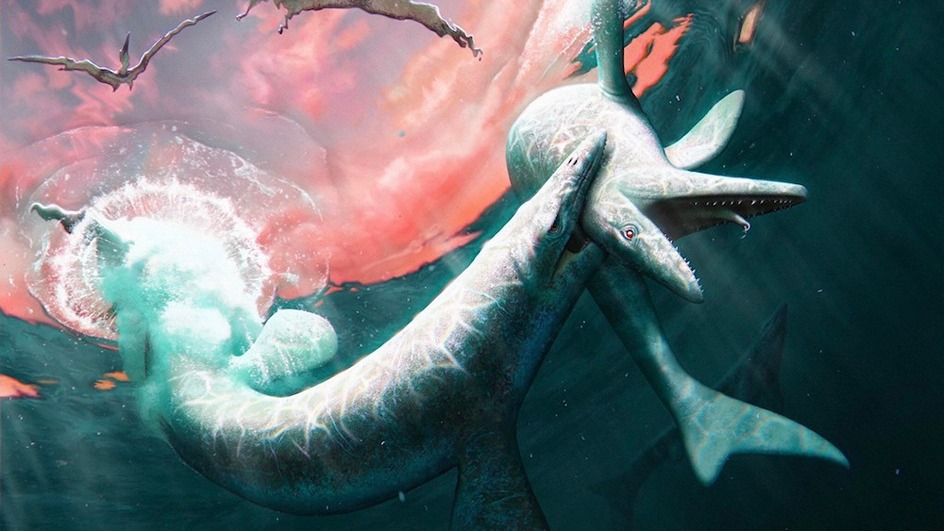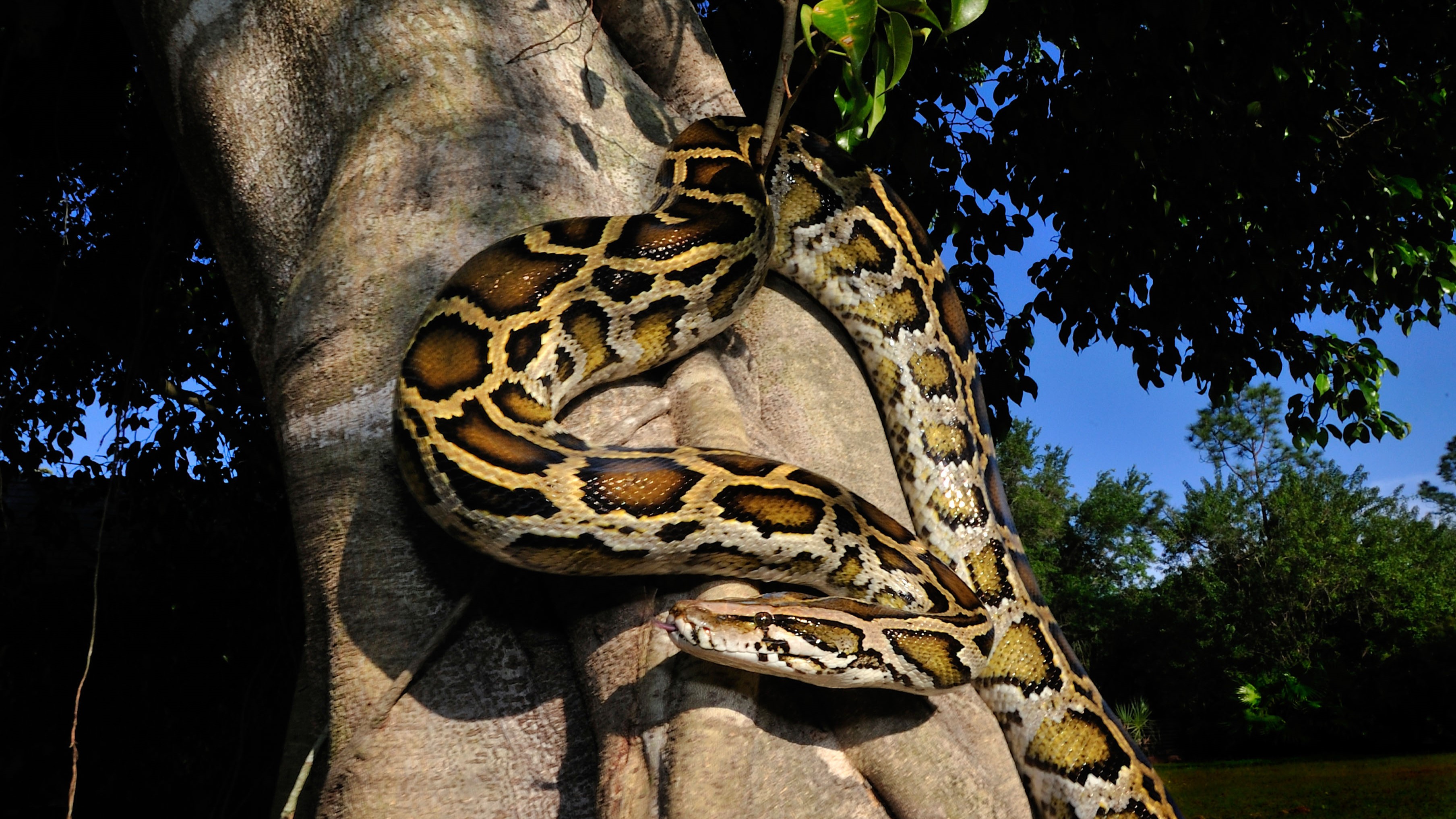Newly discovered Cretaceous sea monster named after world-ending Norse serpent
Paleontologists have described a new species of mosasaur with "angry eyebrows" that lived 80 million years ago.

Scientists have named an ancient species of giant sea lizard with "angry eyebrows" and a stumpy tail after Jörmungandr, a sea serpent from Norse mythology.
The fearsome creature, Jǫrmungandr walhallaensis, lived 80 million years ago in an ancient sea in what is now North Dakota.
"If you put flippers on a Komodo dragon and made it really big, that's what it would have looked like," lead author Amelia Zietlow, a postdoctoral student in comparative biology at the American Museum of Natural History's Richard Gilder Graduate School, said in a statement.
Related: 94 million-year-old fossilized sea monster is the oldest of its kind in North America
Zietlow and colleagues discovered the almost-complete skull, jaws, cervical spine and several vertebrae of the 24-foot-long (7 meters) mosasaur in 2015 in Walhalla, North Dakota. The team described the sea monster in a paper published Monday (Oct. 30) in the journal Bulletin of the American Museum of Natural History.
Their analysis showed that J. walhallaensis contained many of the same features as two known mosasaurs: the smaller Clidastes and the much larger Mosasaurus, which it predates. Like its giant cousin, J. walhallaensis lived during the Cretaceous period (roughly 145 million to 66 million years ago) alongside dinosaurs and had massive flippers and a "shark-like tail" that helped it glide through the water. It also had a bony ridge on its skull that resembled "angry eyebrows," according to the statement.
Paleontologists still don't agree on whether mosasaurs are more closely related to lizards or to snakes. However, this newly described species offers researchers more insight into these elusive sea creatures.
Sign up for the Live Science daily newsletter now
Get the world’s most fascinating discoveries delivered straight to your inbox.
"As these animals evolved into these giant sea monsters, they were constantly making changes," Zietlow said. "This work gets us one step closer to understanding how all these different forms are related to one another."
Jennifer Nalewicki is former Live Science staff writer and Salt Lake City-based journalist whose work has been featured in The New York Times, Smithsonian Magazine, Scientific American, Popular Mechanics and more. She covers several science topics from planet Earth to paleontology and archaeology to health and culture. Prior to freelancing, Jennifer held an Editor role at Time Inc. Jennifer has a bachelor's degree in Journalism from The University of Texas at Austin.










